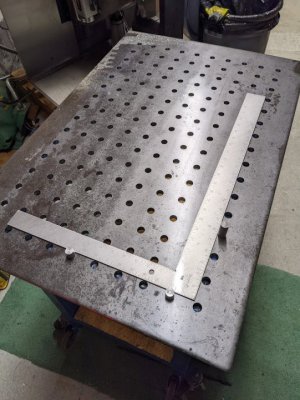- Joined
- Jun 10, 2019
- Messages
- 534
Was wondering if anyone had tips or setting recommendations for filling holes in 1" thick steel plate. Holes vary in size; largest is about 5/8" or 3/4". It's a mild steel workbench/fabrication table. I'd like to fill these holes up because their locations would interfere with fixturing holes I plan on drilling. Since some of these filled holes could end up being partially drilled out I'd need to tie to the full plate thickness vs. using the plug with a shallow weld on top. Not rocket surgery nor a critical part, but figured I'd ask before going the trial & error route.
- I assume wire feed would be the best process. Would GMAW, FCAW, or dual-shield be the most appropriate?
- Settings? Machine is a MM252, 28v (38v OCV) and up to 700ipm.
- I read that it can be better if welding from both sides (e.g. half the depth from each side). Accessing the bottom side in my case would be a bit tricky; would have to flip a ~1,200 lb plate of steel which is welded to 300lbs of table frame. But if its far better to tackle from both sides: let me know. Don't know if this would be practical to weld overhead, but if yes: tips?
Last edited:



